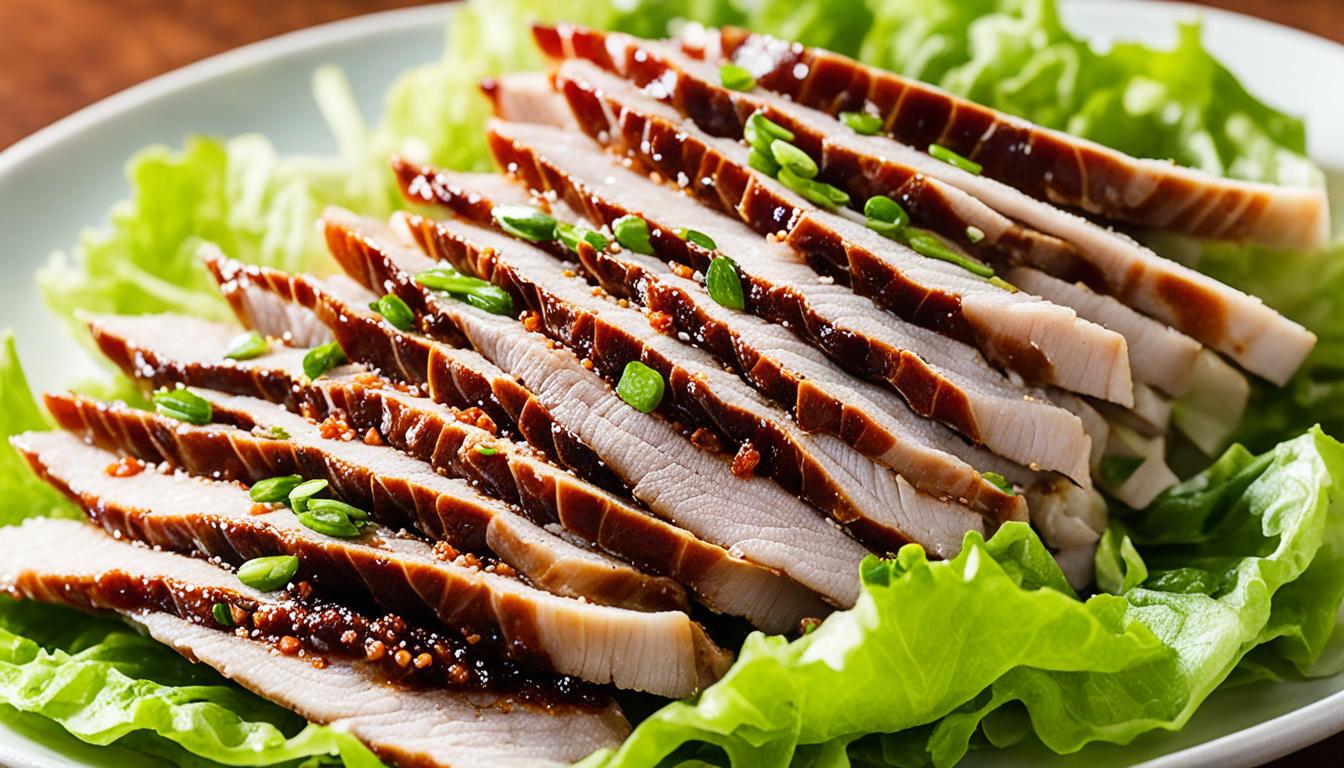Have you ever tasted the delectable combination of tender boiled pork, crisp cabbage leaves, and tangy radish salad? If not, get ready to experience the mouthwatering delight of bossam, a traditional Korean dish that will transport your taste buds to the vibrant streets of Seoul. But what makes bossam so special? Discover the secrets of this iconic Korean recipe and learn how to recreate its flavors in your own kitchen.
Known for its simplicity and depth of flavors, bossam is a beloved dish in Korean cuisine. It features thinly sliced boiled pork, wrapped in cabbage leaves, and served with an array of accompaniments. The result? A harmonious combination of textures and flavors that is hard to resist.
But what sets bossam apart from other pork dishes? It’s the meticulous cooking process and the traditional ingredients that give this dish its unique character. Brace yourself for a culinary journey as we uncover the secrets of bossam – from the tenderizing brine to the selection of the perfect cut of pork.
How to Make Bossam Wraps: A Step-by-Step Guide
To make delicious bossam wraps, follow these simple steps:
- Prepare the cabbage or lettuce leaves.
- Make the radish salad, known as musaengchae.
- Prepare the salted shrimp.
If using napa cabbage, soak the leaves in a saltwater brine until they become softened.
Rinse and drain the leaves before using.
Thinly slice the radish and mix it with salt, sugar, fish sauce, garlic, and green onion.
Set aside the radish salad for later use.
Use the salted shrimp as is or mix it with gochugaru, sesame oil, sesame seeds, and chopped scallions.
Once all the ingredients are ready, you can proceed to assemble your bossam wraps by placing a slice of the boiled pork belly on a cabbage or lettuce leaf, adding a spoonful of radish salad and a dollop of the prepared salted shrimp. Roll up the leaf, securing the contents inside, and enjoy your homemade bossam wraps! The combination of tender pork belly, tangy radish salad, and flavorful salted shrimp makes for a delightful culinary experience.
Best Bossam Side Dishes: Enhancing the Bossam Experience
The bossam experience can be enhanced by serving it with various side dishes. One of the most popular accompaniments to bossam is kimchi – a fermented vegetable dish that adds a tangy and spicy flavor. The combination of the rich and savory taste of the pork with the bold and vibrant flavors of kimchi creates an explosion of taste in every bite.
In addition to kimchi, pickled vegetables are also a great choice to serve alongside bossam. Pickled radish or cucumber, for example, provide a refreshing and crunchy contrast to the tender meat. The acidity and crunch of the pickled vegetables complement the soft and juicy pork, creating a delightful texture and taste sensation.
Another must-have side dish for bossam is ssamjang, a seasoned soybean paste. Ssamjang is a versatile dipping sauce that adds depth and complexity to the bossam wraps. Its combination of savory, salty, and slightly spicy flavors enhances the overall taste of the dish, giving it an extra layer of deliciousness.
